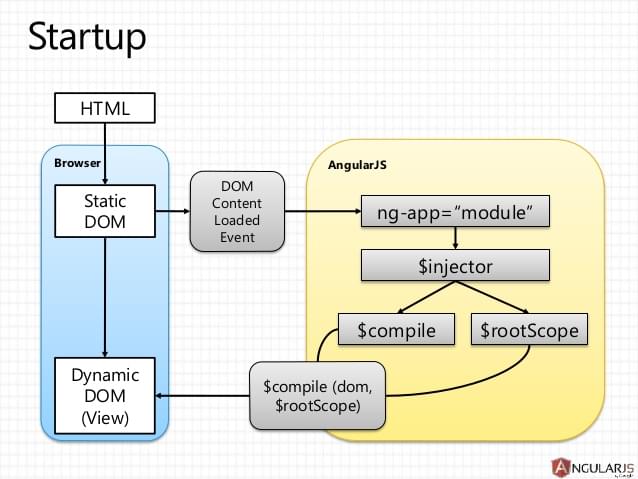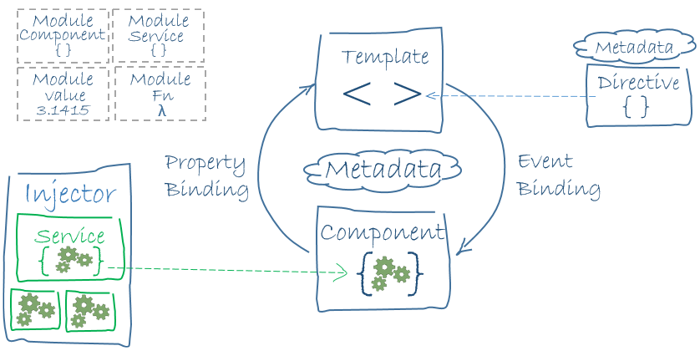This article compares the major differences between the the original AngularJS and Angular 2+. If you’re currently stuck with an AngularJS project and not sure whether you should make the jump, this article should help you get started.
In recent years, we’ve seen Angular grow tremendously as a framework and as a platform for developing single page applications (SPAs) and progressive web apps (PWAs). AngularJS was built on top of the idea that declarative programming should be used for building the views. This required decoupling the DOM manipulation from the business logic of the application and the approach had many benefits on its own.
However, AngularJS had many shortcoming in terms of performance and how things worked under the hood. Hence, the development team spent a year rewriting the code from scratch and finally released Angular 2 in late 2016. Most developers felt that Angular 2 was a different platform that had very little resemblance to the original AngularJS.
So let’s compare and contrast AngularJS and Angular 2+.
Frameworks in AngularJS and Angular 2
AngularJS follows the traditional MVC architecture that comprises a model, a view and a controller.
- Controller: the controller represents how user interactions are handled and binds both the model and the view.
- Views: the view represents the presentation layer and the actual UI.
- Model: the model is an abstract representation of your data.
Some developers are of the opinion that AngularJS follows MVVM pattern that replaces the Controller with a View-Model. A View-Model is a JavaScript function that’s similar to that of the controller. What makes it special is that it synchronizes the data between a view and a model. The changes made to a UI element automatically propagate to the model and vice versa.
The following diagram shows how various AngularJS pieces are connected together.

You can read more about AngularJS’s architecture on the official documentation page.
Angular, on the other, hand has a component-based architecture. Every Angular application has at least one component known as the root component. Each component has an associated class that’s responsible for handling the business logic and a template that represents the view layer. Multiple, closely related components can be stacked together to create a module and each module forms a functional unit on its own.

As you can see in the figure, the component is bound to the template. Components are composed using TypeScript classes and templates are attached to them using @Component annotations. Services can be injected into a component using Angular’s dependency injection subsystem. The concept of modules in Angular is drastically different from that of the AngularJS modules. An NgModule is a container for defining a functional unit. An NgModule can comprise components, services and other functions. The modular unit can then be imported and used with other modules.
All the Angular concepts are better explained at Angular.io.
Templates in AngularJS and Angular 2
In AngularJS the template is written using HTML. To make it dynamic, you can add AngularJS-specific code such as attributes, markups, filters and form controls. In addition, it supports the two-way data binding technique mentioned earlier. The following code snippet demonstrates the use of directives and double curly brackets within the template:
<html ng-app>
<!-- Body tag augmented with ngController directive -->
<body ng-controller="MyController">
<inpu#t ng-model="foo" value="bar">
<!-- Button tag with ngClick directive -->
<!-- Curly bracket is a template binding syntax -->
button ng-click="changeFoo()"></button>
<script src="angular.js"></script>
</body>
</html>
In Angular, AngularJS’s template structure was reworked and lots of new features were added to the templates. The primary difference was that each component had a template attached to it. All the HTML elements except <html>, <body>, <base>, and <script> work within the template. Apart from that, there are features such as template binding, template interpolation, template statements, property binding, event binding and two-way binding. Built-in attribute directives like NgClass, NgStyle and NgModel and built-in structural directives such as NgIf, NgForOf, NgSwitch are also part of the template.
Continue reading %AngularJS and Angular 2+: a Detailed Comparison%
by Manjunath M via SitePoint
No comments:
Post a Comment